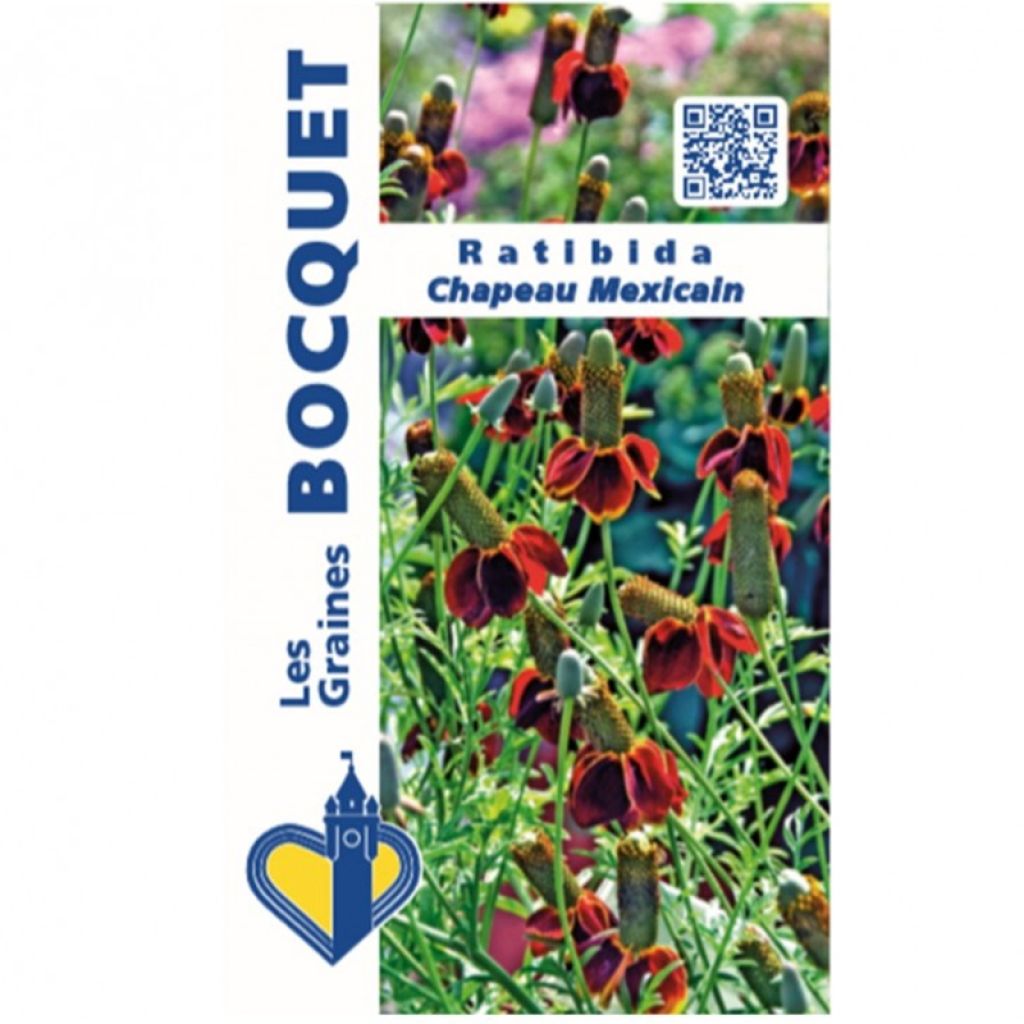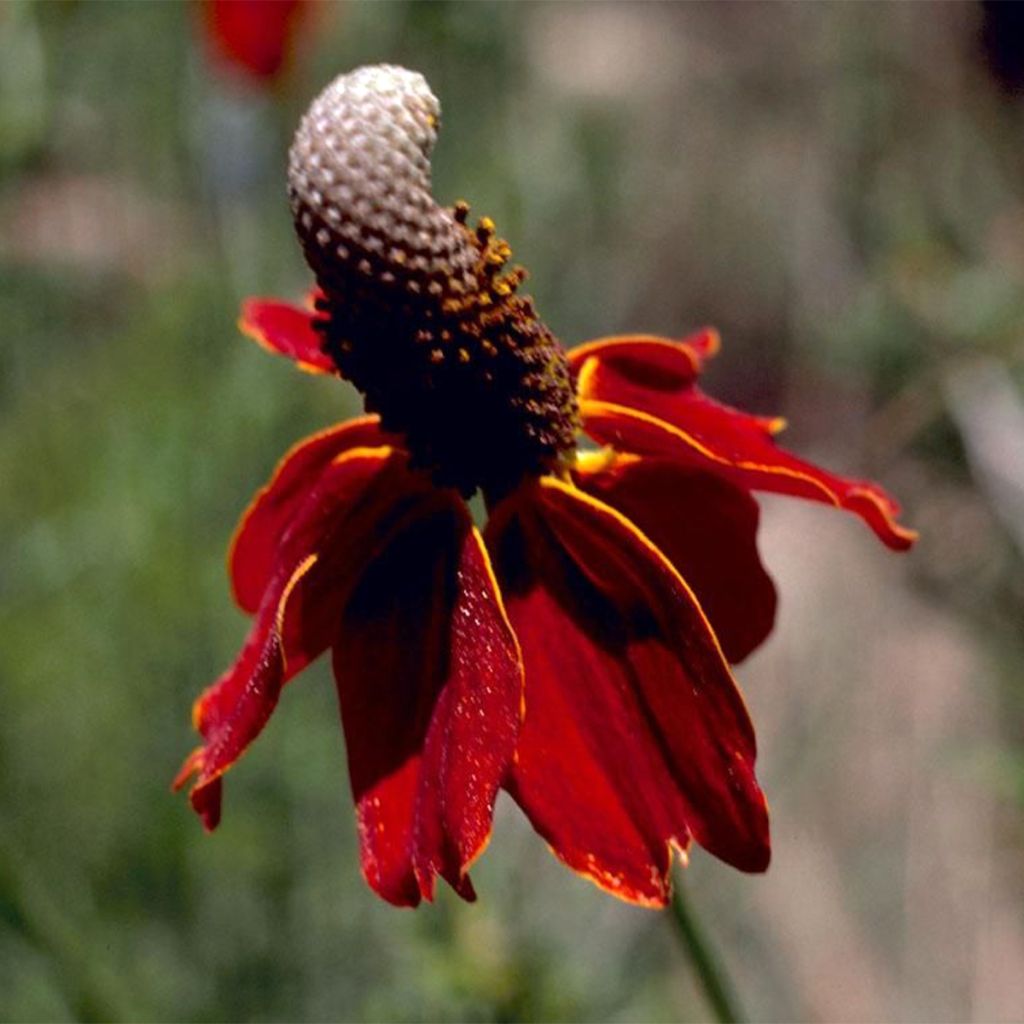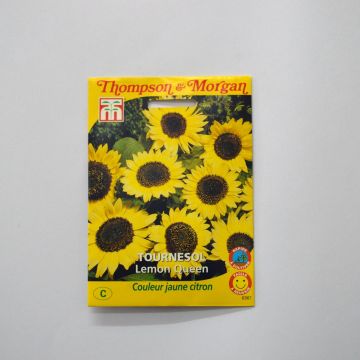

Graines de Ratibida columnifera Chapeau mexicain


Graines de Ratibida columnifera Chapeau mexicain


Graines de Ratibida columnifera Chapeau mexicain


Graines de Ratibida columnifera Chapeau mexicain
Ratibida columnifera - Mexican Hat
Ratibida columnifera
Upright Prairie Coneflower, Long-headed Coneflower, Mexican Hat
Very good germination
Asseraf X., 16/05/2023
This item cannot be shipped to the selected country
Dispatch by letter from €3.90
Delivery to Corse prohibited
More information
Schedule delivery date,
and select date in basket
This plant carries a 6 months recovery warranty
More information
We guarantee the quality of our plants for a full growing cycle, and will replace at our expense any plant that fails to recover under normal climatic and planting conditions.
Seed-only orders are dispatched by sealed envelope. The delivery charge for seed-only orders is €3.90.
Delivery to Corse prohibited: UE law prohibits the import of this plant from mainland France to Corse as part of the fight against Xylella fastidiosa. Please accept our sincere apologies.
More information
Does this plant fit my garden?
Set up your Plantfit profile →
Description
Ratibida columnifera, commonly known as the Sombrero or Mexican hat plant, has a light appearance and abundant and unusual summer flowering that irresistibly catches the eye. Its flamboyant brick red and golden yellow flowers highlight an oversized central cone. Native to the great plains of the United States, this short-lived perennial self-seeds freely. It is perfect for dynamic gardens, flowery meadows, and countryside beds. Hardy, generous, undemanding, and very water-efficient, it is easy to grow in the sun, in any not too heavy garden soil, even fairly dry in summer.
Ratibida columnifera belongs to the Asteraceae family, just like its cousin echinacea, which it resembles. In its native lands, it is called long-headed echinacea, or prairie coneflower. It is an herbaceous plant, perennial by its stump, with a lifespan of no more than 3 or 4 years. It quickly forms a clump about 75cm (30in) tall and 50cm (20in) wide, composed of numerous leafy and branched stems. The foliage persists in winter if the plant is pruned in autumn. It consists of very finely divided grey-green leaves with linear segments,. They are slightly velvety, reminiscent of cosmos. The flowering is particularly long. It renews from June to September if the soil remains somewhat moist. At the ends of the stems, brick red flowers appear. They are heads composed of a collar of velvety, trailing petals or ligules, bordered with golden yellow. In the centre, a column of fertile florets reigns, its colour ranging from pale-green to yellow and then reddish-brown. These flowers are visited by numerous butterflies and pollinating insects. The plant produces many seeds that easily germinate in light soils. They are sought after by certain birds.
Ratibida columnifera is a plant with a unique personality: both light and whimsical, it resembles nothing known. It is used in sunny beds mixed with easy and generous annuals such as nigellas, poppies, cosmos, amaranths, or centaureas. Complete the scene by mingling it with California poppies or some ornamental grasses like Stipa tenuifolia, Schizachyrium scoparium 'Blue Heaven', or Muhlenbergia capillaris. Splendid in border beds, Ratibida's whimsical and flamboyant flowers are also perfect in fresh or dried flower bouquets. Its association with the shrubby Artemisia 'Powis Castle' is superb.
Report an error about the product description
Ratibida columnifera - Mexican Hat in pictures




Flowering
Foliage
Plant habit
Botanical data
Ratibida
columnifera
Asteraceae
Upright Prairie Coneflower, Long-headed Coneflower, Mexican Hat
North America
Other Sunflower seeds
Planting and care
Sowing:
Ratibida seeds need a cold period to germinate well.
Sow in March-April under a warm frame at a minimum of 20°C (68°F) and plant out in May with a spacing of 25cm (10in). From May to June, sow directly in place, thinning to 25cm (10in) in all directions when the plants reach 8 to 10cm (3 to 4in) in height.
Autumn sowing is also possible to obtain larger and earlier flowers. Transplant in a warm nursery and plant out in spring with a spacing of 25cm (10in). In mild regions, it can also be sown directly in place in October. Thin to leave only one plant every 25cm (10in).
Cultivation:
Plant in spring, or at the latest in early autumn in mild regions. It thrives in full sun, in loose and well-drained garden soil, that is not too heavy (a mix of garden soil, compost, and fine gravel will be perfect). Choose its location carefully, as this plant does not appreciate being disturbed. Once well established, it withstands dry summers well. However, occasional watering in summer will be appreciated in dry regions to support flowering. Remove faded flowers as they appear if you want to avoid spontaneous seeding. Divide the clump after 3 years to rejuvenate the plant, or let it die and self-seed (plants from seed may not be identical to the mother plant). Prune the foliage clump in autumn, as this will encourage the plant to develop new foliage that will persist in winter. Ratibida has good hardiness, but clayey and waterlogged soils are detrimental to it. Acidic soils should be avoided, but limestone is well tolerated.
Ratibida is not prone to diseases or pests.
Sowing period
Intended location
-
, onOrder confirmed
Reply from on Promesse de fleurs
Flower seeds
Haven't found what you were looking for?
Hardiness is the lowest winter temperature a plant can endure without suffering serious damage or even dying. However, hardiness is affected by location (a sheltered area, such as a patio), protection (winter cover) and soil type (hardiness is improved by well-drained soil).

Photo Sharing Terms & Conditions
In order to encourage gardeners to interact and share their experiences, Promesse de fleurs offers various media enabling content to be uploaded onto its Site - in particular via the ‘Photo sharing’ module.
The User agrees to refrain from:
- Posting any content that is illegal, prejudicial, insulting, racist, inciteful to hatred, revisionist, contrary to public decency, that infringes on privacy or on the privacy rights of third parties, in particular the publicity rights of persons and goods, intellectual property rights, or the right to privacy.
- Submitting content on behalf of a third party;
- Impersonate the identity of a third party and/or publish any personal information about a third party;
In general, the User undertakes to refrain from any unethical behaviour.
All Content (in particular text, comments, files, images, photos, videos, creative works, etc.), which may be subject to property or intellectual property rights, image or other private rights, shall remain the property of the User, subject to the limited rights granted by the terms of the licence granted by Promesse de fleurs as stated below. Users are at liberty to publish or not to publish such Content on the Site, notably via the ‘Photo Sharing’ facility, and accept that this Content shall be made public and freely accessible, notably on the Internet.
Users further acknowledge, undertake to have ,and guarantee that they hold all necessary rights and permissions to publish such material on the Site, in particular with regard to the legislation in force pertaining to any privacy, property, intellectual property, image, or contractual rights, or rights of any other nature. By publishing such Content on the Site, Users acknowledge accepting full liability as publishers of the Content within the meaning of the law, and grant Promesse de fleurs, free of charge, an inclusive, worldwide licence for the said Content for the entire duration of its publication, including all reproduction, representation, up/downloading, displaying, performing, transmission, and storage rights.
Users also grant permission for their name to be linked to the Content and accept that this link may not always be made available.
By engaging in posting material, Users consent to their Content becoming automatically accessible on the Internet, in particular on other sites and/or blogs and/or web pages of the Promesse de fleurs site, including in particular social pages and the Promesse de fleurs catalogue.
Users may secure the removal of entrusted content free of charge by issuing a simple request via our contact form.
The flowering period indicated on our website applies to countries and regions located in USDA zone 8 (France, the United Kingdom, Ireland, the Netherlands, etc.)
It will vary according to where you live:
- In zones 9 to 10 (Italy, Spain, Greece, etc.), flowering will occur about 2 to 4 weeks earlier.
- In zones 6 to 7 (Germany, Poland, Slovenia, and lower mountainous regions), flowering will be delayed by 2 to 3 weeks.
- In zone 5 (Central Europe, Scandinavia), blooming will be delayed by 3 to 5 weeks.
In temperate climates, pruning of spring-flowering shrubs (forsythia, spireas, etc.) should be done just after flowering.
Pruning of summer-flowering shrubs (Indian Lilac, Perovskia, etc.) can be done in winter or spring.
In cold regions as well as with frost-sensitive plants, avoid pruning too early when severe frosts may still occur.
The planting period indicated on our website applies to countries and regions located in USDA zone 8 (France, United Kingdom, Ireland, Netherlands).
It will vary according to where you live:
- In Mediterranean zones (Marseille, Madrid, Milan, etc.), autumn and winter are the best planting periods.
- In continental zones (Strasbourg, Munich, Vienna, etc.), delay planting by 2 to 3 weeks in spring and bring it forward by 2 to 4 weeks in autumn.
- In mountainous regions (the Alps, Pyrenees, Carpathians, etc.), it is best to plant in late spring (May-June) or late summer (August-September).
The harvesting period indicated on our website applies to countries and regions in USDA zone 8 (France, England, Ireland, the Netherlands).
In colder areas (Scandinavia, Poland, Austria...) fruit and vegetable harvests are likely to be delayed by 3-4 weeks.
In warmer areas (Italy, Spain, Greece, etc.), harvesting will probably take place earlier, depending on weather conditions.
The sowing periods indicated on our website apply to countries and regions within USDA Zone 8 (France, UK, Ireland, Netherlands).
In colder areas (Scandinavia, Poland, Austria...), delay any outdoor sowing by 3-4 weeks, or sow under glass.
In warmer climes (Italy, Spain, Greece, etc.), bring outdoor sowing forward by a few weeks.






















































